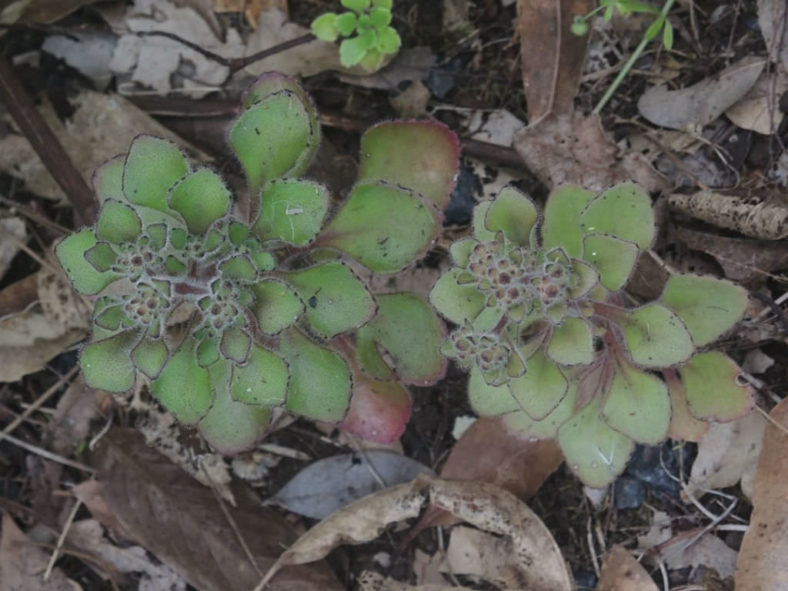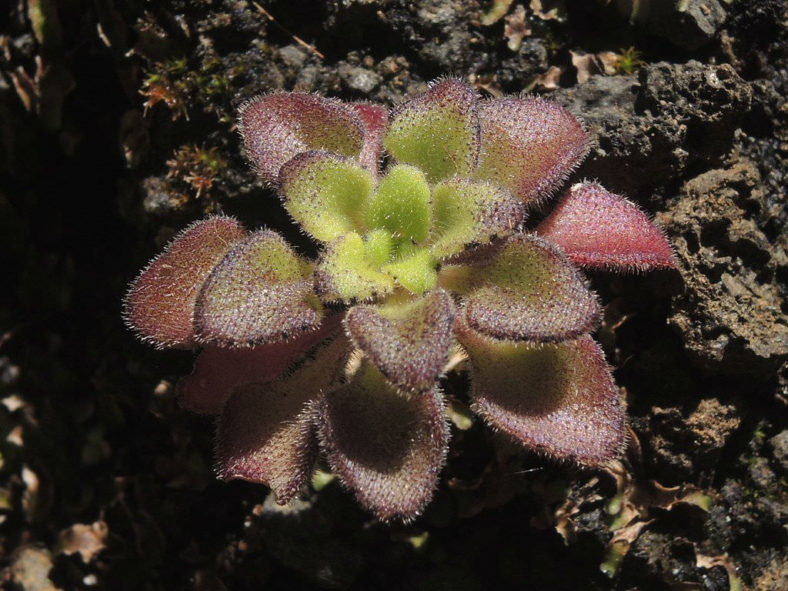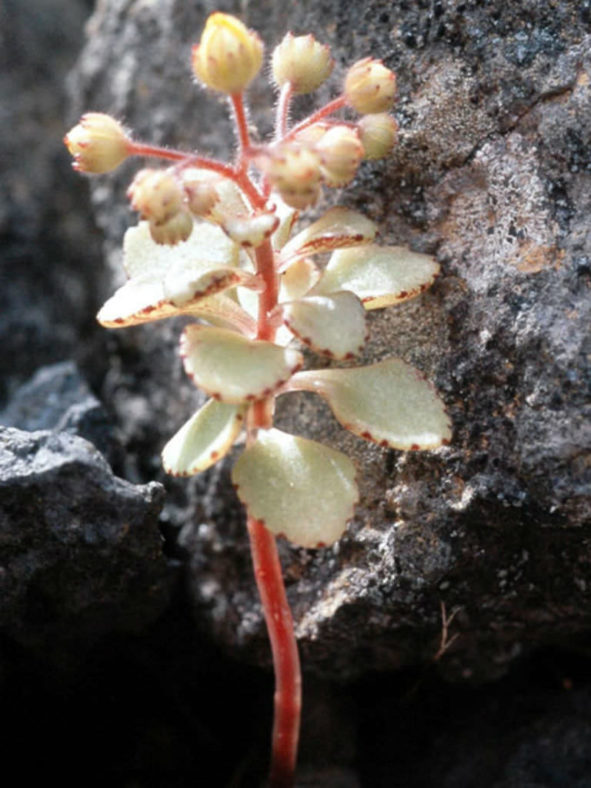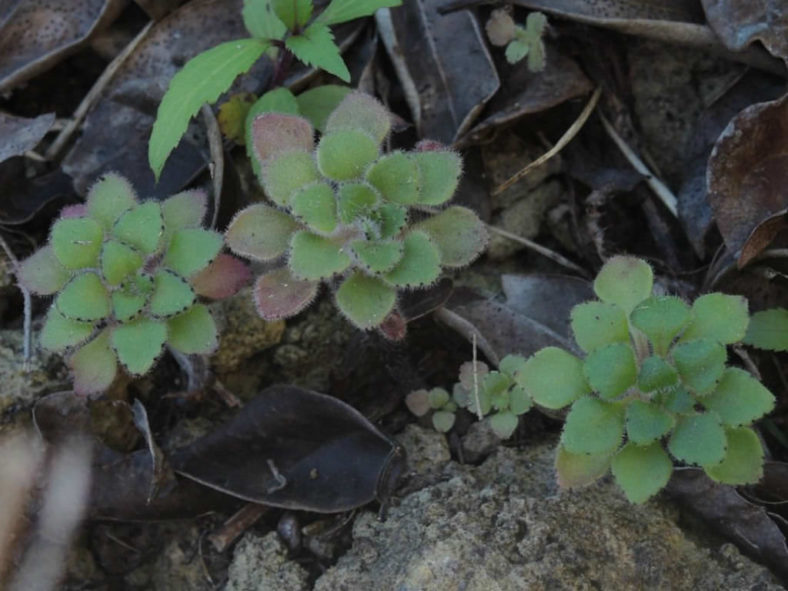Scientific Name
Aichryson bollei Webb ex Bolle
Synonym(s)
Sempervivum bollei
Scientific Classification
Family: Crassulaceae
Subfamily: Sempervivoideae
Tribe: Aeonieae
Genus: Aichryson
Description
Aichryson bollei is an annual or biennial, simple or sparsely branched succulent with stems covered with short hairs and hairy green or reddish (in intense light) leaves. It can grow up to 14 inches (35 cm) tall. The leaves can measure up to 1.4 inches (3.5 cm) long and 0.9 inches (2.3 cm) wide.
The flowers are star-shaped, pale yellow with a greenish stripe, and can reach 0.4 inches (1 cm) in diameter.

Hardiness
USDA hardiness zone 9b to 11b: from 25 °F (−3.9 °C) to 50 °F (+10 °C).
How to Grow and Care
Aichrysons grow as understory plants in the endemic laurel and pine forests of the Canary Islands. They prefer to grow in slightly shaded, moist soil with plenty of humus. If kept fairly dry, they tolerate a cold, frost-free winter. Some species are annuals or biennials, but the shrubby perennials must also be re-started from cuttings regularly to be at their best. Many species produce volunteer seedlings around themselves after flowering.
These succulents tolerate mixed conditions and will tolerate considerable shade and full sun. Given the right conditions, these plants will provide an incredible show of yellow flowers. Grow these plants hard with little fertilizer because they can flower themselves to death. Aichrysons have a very structural trunk and make excellent bonsai subjects.
They require a rather sunny spot inside at moderate, cool temperatures in winter. If they become too large, plants can be cut back. Cuttings will easily root within a few days. These ornamental dwarf plants are excellent pot plants and thrive in any partially shaded spot at cool temperatures, e.g., on a window sill.
Learn more at How to Grow and Care for Aichryson.
Origin
Aichryson bollei is native to the Canary Islands (La Palma).
Links
- Back to genus Aichryson
- Succupedia: Browse succulents by Scientific Name, Common Name, Genus, Family, USDA Hardiness Zone, Origin, or cacti by Genus
Photo Gallery
Click on a photo to see a larger version.



